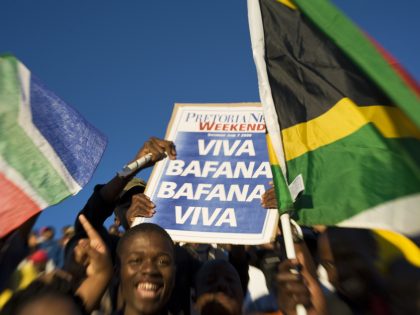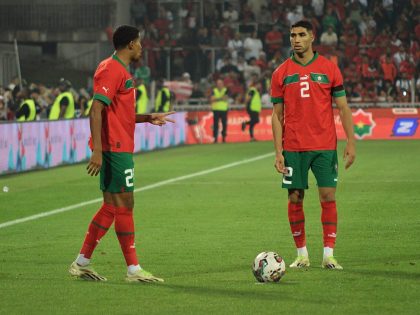Social Media in Africa’s Revolutions
How anonymous parties define, construct, and support uprisings in Africa via social media.

The art of Cyrus Kabiru.
I recently visited the Museum of Contemporary African Diasporan Art (better known by its acronym MoCADA) in the Fort Greene section of Brooklyn to view its current exhibition: “NEWSFEED: Anonymity & Social Media in African Revolutions and Beyond.” Running through January 20, the exhibition is part of a larger curatorial series with satellite exhibitions at the nearby 2AC Gallery and Long Island University Humanities Galleries. The works on display “investigate global interconnectivity and how anonymous parties define, construct, and support uprisings in Africa via social media.” Some of the artists featured include Delphine Fawundu-Buford, Jasmine Murrell, and Mohau Modisakeng (that’s “Badisa [Shepherds]” by Modisakeng above). Much of the exhibition appears to have been inspired by the unfinished Egyptian Revolution and the larger ‘Arab Spring.’
The MoCADA is one of the most underrated museum/gallery spaces in New York City. Although the space it occupies (on Hanson Place and around the corner from the new Barclays Center) is tiny, the curators have a real knack for making the most of said space. Moreover, the museum’s founder, Laurie Cumbo, is an endlessly impressive human being who seems destined for big things. That said, I found myself a bit disappointed by this particular exhibition’s offerings. This could simply be due to the fact that I did not visit the other two satellite exhibitions, of course. Yet, I felt that many of the works lack the degree of nuance and subtlety I have come to expect from the MoCADA’s exhibitions.
But I did appreciate the exhibition’s use of a wide range of media, from painting, to photography, sculpture, computer animation, and beyond. There was even a short documentary from the My Africa Is series, which presented a number of interviews with various experts and professionals (including AIAC’s very own, Sean Jacobs) discussing some of the ways African entrepreneurs are using social and new media.
Perhaps the most exciting thing on display is a beta version of a tablet/smart phone application created by Sian Morson of Kollective Mobile. The app conglomerates Africa-specific discussions taking place on various social media platforms (primarily Twitter) and groups them by country. The interface is set up so that users can tap different countries on a map of the continent, opening a specific page for that country. These individual country pages provide users with a brief prompt containing basic information on the country and next to this, an outline of the country’s borders. Within the borders are a number of images corresponding to Twitter users’ profile pictures, which one may then tap to read their tweets. The app contains a few glitches (the Tweets are not necessarily updated in real time, for instance) and not every country has its own page, but it is quite captivating nonetheless. The app is not available for download yet, though when I asked one of the museum’s staff, I was told that they were trying to make it available for free download once the exhibition has closed. Until then, it’s worth making the trip to the MoCADA to check it out along with the rest of the exhibition.



















